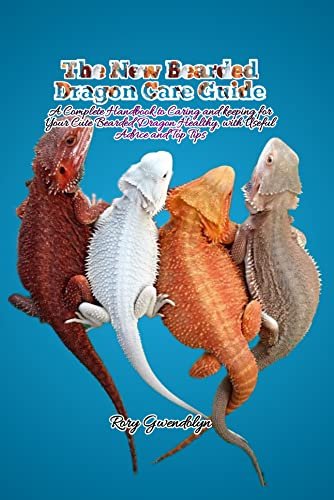
You might be wondering what makes bearded dragons such a popular choice among pet lizards. For starters, they have laid-back personalities and are often more friendly than other reptiles. Plus, their unique look—those spiky little beards—makes them irresistibly charming. However, owning one means understanding their specific needs, and that includes their habitat, diet, and health care. So, grab a cup of coffee, and let’s explore the ins and outs of bearded dragon care!
Setting Up the Perfect Habitat
Creating a comfortable home for your bearded dragon is crucial. Think of this as setting up a cozy apartment—but for a lizard. The first step is to choose the right size tank. A 40-gallon tank is a good starting point for young dragons, but as they grow, you might need to upgrade to a larger space. Remember, these creatures love to roam a bit!
Next, consider the temperature. Bearded dragons are *cold-blooded*, meaning they rely on their environment to regulate their body temperature. A heat lamp or basking light is essential for providing a warm spot in the tank, ideally around 95-105°F during the day. The cool side of the tank should be around 75-85°F, which allows them to thermoregulate properly. Here’s the thing: you can use a simple thermometer to monitor these temperatures and ensure they’re living in a comfortable environment.
Don’t forget about the decoration! Adding things like hiding spots, climbing branches, and sand or reptile carpet at the bottom can make your pet feel more at home. Bearded dragons enjoy exploring and basking, so give them places to climb and lounge. Finally, always provide fresh water in a shallow dish; hydration is key!
Feeding Your Bearded Dragon
Feeding your bearded dragon is both fun and a bit of a science experiment. These critters are omnivores, which means they eat both plants and insects. Think of them as tiny, picky eaters who enjoy variety! A balanced diet includes live insects like crickets and mealworms, as well as fresh greens like collard greens, kale, and the occasional fruit like blueberries or strawberries.
When feeding your dragon, it’s important to chop up the veggies into small, bite-sized pieces. Here’s a tip: sprinkle some calcium powder on their food a few times a week. This helps support strong bones and prevents health issues. Just like how we need vitamins, your bearded dragon requires proper nutrition to thrive.
You might be wondering how often to feed them. Baby dragons typically eat daily, while adults can eat every other day. Adjust their portions based on their age and size, but always keep an eye on their weight. If you notice them losing weight or seeming lethargic, it might be time for a vet visit.
Understanding Lighting and Temperature
Lighting and temperature go hand in hand when it comes to bearded dragon care. Imagine it’s like the sun and shade in your backyard—the right balance is essential for a happy lizard. UVB lighting is a must-have because it helps them synthesize vitamin D3, which in turn keeps their bones healthy. Look for a UVB fluorescent bulb specifically made for reptiles, and keep it on for 10-12 hours a day.
Position the light within the tank, ensuring that your dragon has access to both the basking area and shaded spots. Too much heat can be just as harmful as too little. Make sure to monitor the temperature using reliable thermometers, placing one on the hot side and one on the cool side of the tank.
If your setup allows it, think about giving your bearded dragon some time outside. Just remember to supervise them carefully, and avoid direct sunlight for too long. We all love some sunshine, but too much can lead to overheating or sunburn—yikes!
Handling and Socializing
Socializing with your bearded dragon can be one of the most rewarding parts of being a pet owner. These lizards can become quite attached to their humans, and handling them regularly can help build trust. Start slowly! Use gentle, calm movements when picking them up. Support their body fully with both hands, and avoid grabbing their tails. Think of this as teaching a little one how to walk—patience is key!
As you spend time together, you can even teach them some tricks or just let them explore a safe space outside their tank. Just like a dog, they can learn to associate you with good things. Offer treats or let them bask in the sun while you supervise.
However, don’t force interaction if they seem stressed or upset. Every dragon has its own personality, and some might take longer than others to warm up to you. Respect their boundaries, and you’ll have a loyal companion in no time!
Health Monitoring and Common Issues
Keeping an eye on your bearded dragon’s health is essential for their well-being. Regular checkups with a vet who specializes in reptiles can help catch any potential issues early. Watch for signs of illness such as lethargy, lack of appetite, or unusual behavior. If you notice any changes, don’t hesitate to reach out to a professional.
Common health problems for bearded dragons can include metabolic bone disease, which results from inadequate calcium or UV exposure. Other issues may involve parasites or respiratory infections, often signaled by changes in breathing or mucus discharge. If you’re ever unsure, better safe than sorry—visit your vet.
Keep their habitat clean by removing waste regularly and changing the substrate when needed. A clean environment helps prevent infections and keeps your pet happy. Just like us, a tidy living space makes a world of difference!
Creating a Comfortable Environment
To make your bearded dragon feel at home, think about their needs and preferences. A comfortable environment means more than just a clean tank and proper food; it involves creating a space where they feel secure. Adding hiding spots using caves, logs, or commercial reptile decor can give them a sense of safety.
Another idea is to introduce some furniture, like basking platforms, to help them enjoy their space. Keep the habitat well-lit and ventilated while ensuring they can escape the light whenever they want.
You might also want to consider a tank cover or plants, but ensure that any live plants are safe for reptiles. Fake plants can also add a nice touch without the hassle of maintenance. Just remember, the more comfortable and enriched their environment, the happier your bearded dragon will be!
Taking care of a bearded dragon can be one of the most fulfilling experiences you’ll have as a pet owner. These creatures are not just pets; they can become part of your family. With the right habitat, diet, and care routine, you can create a beautiful life for your new scaly friend. Remember, there will be ups, downs, and lots of learning involved, but that’s all part of the adventure!
By focusing on their needs and getting to know their personalities, you’ll not only keep them healthy but also develop a bond that lasts. So take it slow, enjoy the process, and embrace the unique quirks that come with being a bearded dragon owner. You’re in for a delightful journey!

